[English] 日本語
 Yorodumi
Yorodumi- PDB-8b87: Crystal structure of Scribble PDZ1 with human papillomavirus stra... -
+ Open data
Open data
- Basic information
Basic information
| Entry | Database: PDB / ID: 8b87 | |||||||||
|---|---|---|---|---|---|---|---|---|---|---|
| Title | Crystal structure of Scribble PDZ1 with human papillomavirus strain 16 E6 peptide | |||||||||
 Components Components |
| |||||||||
 Keywords Keywords |  PROTEIN BINDING / PROTEIN BINDING /  Scribble / Scribble /  human papillomavirus / E6 / human papillomavirus / E6 /  PDZ domain / cell polarity PDZ domain / cell polarity | |||||||||
| Function / homology |  Function and homology information Function and homology information extrinsic component of postsynaptic density membrane / neurotransmitter receptor transport postsynaptic membrane to endosome / establishment of T cell polarity / apoptotic process involved in morphogenesis / establishment of apical/basal cell polarity / cochlear nucleus development / synaptic vesicle targeting / Scrib-APC-beta-catenin complex / astrocyte cell migration / polarized epithelial cell differentiation ... extrinsic component of postsynaptic density membrane / neurotransmitter receptor transport postsynaptic membrane to endosome / establishment of T cell polarity / apoptotic process involved in morphogenesis / establishment of apical/basal cell polarity / cochlear nucleus development / synaptic vesicle targeting / Scrib-APC-beta-catenin complex / astrocyte cell migration / polarized epithelial cell differentiation ... extrinsic component of postsynaptic density membrane / neurotransmitter receptor transport postsynaptic membrane to endosome / establishment of T cell polarity / apoptotic process involved in morphogenesis / establishment of apical/basal cell polarity / cochlear nucleus development / synaptic vesicle targeting / Scrib-APC-beta-catenin complex / astrocyte cell migration / polarized epithelial cell differentiation / myelin sheath abaxonal region / neurotransmitter receptor transport, endosome to postsynaptic membrane / protein localization to adherens junction / cell-cell contact zone / mammary gland duct morphogenesis / post-anal tail morphogenesis / activation of GTPase activity / establishment or maintenance of epithelial cell apical/basal polarity / regulation of postsynaptic neurotransmitter receptor internalization / auditory receptor cell stereocilium organization / RND2 GTPase cycle / RND3 GTPase cycle / positive regulation of receptor recycling / positive chemotaxis / RHOJ GTPase cycle / RHOQ GTPase cycle / receptor clustering / negative regulation of activated T cell proliferation / CDC42 GTPase cycle / synaptic vesicle endocytosis / extrinsic component of postsynaptic density membrane / neurotransmitter receptor transport postsynaptic membrane to endosome / establishment of T cell polarity / apoptotic process involved in morphogenesis / establishment of apical/basal cell polarity / cochlear nucleus development / synaptic vesicle targeting / Scrib-APC-beta-catenin complex / astrocyte cell migration / polarized epithelial cell differentiation / myelin sheath abaxonal region / neurotransmitter receptor transport, endosome to postsynaptic membrane / protein localization to adherens junction / cell-cell contact zone / mammary gland duct morphogenesis / post-anal tail morphogenesis / activation of GTPase activity / establishment or maintenance of epithelial cell apical/basal polarity / regulation of postsynaptic neurotransmitter receptor internalization / auditory receptor cell stereocilium organization / RND2 GTPase cycle / RND3 GTPase cycle / positive regulation of receptor recycling / positive chemotaxis / RHOJ GTPase cycle / RHOQ GTPase cycle / receptor clustering / negative regulation of activated T cell proliferation / CDC42 GTPase cycle / synaptic vesicle endocytosis /  immunological synapse / negative regulation of mitotic cell cycle / signaling adaptor activity / : / Asymmetric localization of PCP proteins / neural tube closure / immunological synapse / negative regulation of mitotic cell cycle / signaling adaptor activity / : / Asymmetric localization of PCP proteins / neural tube closure /  PDZ domain binding / PDZ domain binding /  adherens junction / adherens junction /  wound healing / wound healing /  cell-cell adhesion / positive regulation of type II interferon production / cell-cell junction / cell-cell adhesion / positive regulation of type II interferon production / cell-cell junction /  cell migration / presynapse / cell migration / presynapse /  cell junction / cell junction /  lamellipodium / symbiont-mediated suppression of host cytoplasmic pattern recognition receptor signaling pathway via inhibition of IRF3 activity / basolateral plasma membrane / symbiont-mediated perturbation of host ubiquitin-like protein modification / cell population proliferation / host cell cytoplasm / lamellipodium / symbiont-mediated suppression of host cytoplasmic pattern recognition receptor signaling pathway via inhibition of IRF3 activity / basolateral plasma membrane / symbiont-mediated perturbation of host ubiquitin-like protein modification / cell population proliferation / host cell cytoplasm /  postsynaptic density / symbiont-mediated suppression of host type I interferon-mediated signaling pathway / postsynaptic density / symbiont-mediated suppression of host type I interferon-mediated signaling pathway /  cadherin binding / positive regulation of apoptotic process / DNA-templated transcription / glutamatergic synapse / host cell nucleus / regulation of DNA-templated transcription / cadherin binding / positive regulation of apoptotic process / DNA-templated transcription / glutamatergic synapse / host cell nucleus / regulation of DNA-templated transcription /  DNA binding / extracellular exosome / DNA binding / extracellular exosome /  nucleoplasm / nucleoplasm /  metal ion binding / metal ion binding /  plasma membrane plasma membraneSimilarity search - Function | |||||||||
| Biological species |   Homo sapiens (human) Homo sapiens (human)  Human papillomavirus type 16 Human papillomavirus type 16 | |||||||||
| Method |  X-RAY DIFFRACTION / X-RAY DIFFRACTION /  SYNCHROTRON / SYNCHROTRON /  MOLECULAR REPLACEMENT / Resolution: 2 Å MOLECULAR REPLACEMENT / Resolution: 2 Å | |||||||||
 Authors Authors | Stewart, B.Z. / Kvansakul, M. | |||||||||
| Funding support |  Australia, 2items Australia, 2items
| |||||||||
 Citation Citation |  Journal: To Be Published Journal: To Be PublishedTitle: Crystal structure of Scribble PDZ1 with human papillomavirus strain 16 E6 peptide Authors: Stewart, B.Z. / Caria, S. / Humbert, P.O. / Kvansakul, M. | |||||||||
| History |
|
- Structure visualization
Structure visualization
| Structure viewer | Molecule:  Molmil Molmil Jmol/JSmol Jmol/JSmol |
|---|
- Downloads & links
Downloads & links
- Download
Download
| PDBx/mmCIF format |  8b87.cif.gz 8b87.cif.gz | 163.5 KB | Display |  PDBx/mmCIF format PDBx/mmCIF format |
|---|---|---|---|---|
| PDB format |  pdb8b87.ent.gz pdb8b87.ent.gz | 108.7 KB | Display |  PDB format PDB format |
| PDBx/mmJSON format |  8b87.json.gz 8b87.json.gz | Tree view |  PDBx/mmJSON format PDBx/mmJSON format | |
| Others |  Other downloads Other downloads |
-Validation report
| Arichive directory |  https://data.pdbj.org/pub/pdb/validation_reports/b8/8b87 https://data.pdbj.org/pub/pdb/validation_reports/b8/8b87 ftp://data.pdbj.org/pub/pdb/validation_reports/b8/8b87 ftp://data.pdbj.org/pub/pdb/validation_reports/b8/8b87 | HTTPS FTP |
|---|
-Related structure data
| Related structure data |  8b82C 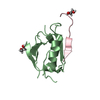 8b8oC 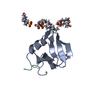 8b9tC 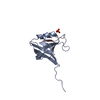 8biaC 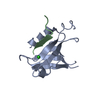 8bj0C 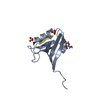 6mtvS S: Starting model for refinement C: citing same article ( |
|---|---|
| Similar structure data | Similarity search - Function & homology  F&H Search F&H Search |
- Links
Links
- Assembly
Assembly
| Deposited unit | 
| ||||||||||||||||||||||||||||||||||||||||||||||||||||||||||||||||||||||||||||||||||||||||||||||||||||||||||||||||||||||||||||||
|---|---|---|---|---|---|---|---|---|---|---|---|---|---|---|---|---|---|---|---|---|---|---|---|---|---|---|---|---|---|---|---|---|---|---|---|---|---|---|---|---|---|---|---|---|---|---|---|---|---|---|---|---|---|---|---|---|---|---|---|---|---|---|---|---|---|---|---|---|---|---|---|---|---|---|---|---|---|---|---|---|---|---|---|---|---|---|---|---|---|---|---|---|---|---|---|---|---|---|---|---|---|---|---|---|---|---|---|---|---|---|---|---|---|---|---|---|---|---|---|---|---|---|---|---|---|---|---|
| 1 |
| ||||||||||||||||||||||||||||||||||||||||||||||||||||||||||||||||||||||||||||||||||||||||||||||||||||||||||||||||||||||||||||||
| Unit cell |
| ||||||||||||||||||||||||||||||||||||||||||||||||||||||||||||||||||||||||||||||||||||||||||||||||||||||||||||||||||||||||||||||
| Components on special symmetry positions |
| ||||||||||||||||||||||||||||||||||||||||||||||||||||||||||||||||||||||||||||||||||||||||||||||||||||||||||||||||||||||||||||||
| Noncrystallographic symmetry (NCS) | NCS domain:
NCS domain segments:
|
 Movie
Movie Controller
Controller


 PDBj
PDBj










